Thymoquinone subdues tumor growth and potentiates the chemopreventive effect of 5-fluorouracil on the early stages of colorectal carcinogenesis in rats
- PMID: 27468227
- PMCID: PMC4946859
- DOI: 10.2147/DDDT.S109721
Thymoquinone subdues tumor growth and potentiates the chemopreventive effect of 5-fluorouracil on the early stages of colorectal carcinogenesis in rats
Abstract
Colorectal cancer (CRC) is one of the most prevalent cancers and has a high mortality rate. Insensitivity and the limited therapeutic efficacy of its standard chemotherapeutic drug, 5-fluorouracil (5-FU), represents an important challenge in CRC treatment. The robust antitumor properties of thymoquinone (TQ), the main bioactive constituent of Nigella sativa, have recently been demonstrated on different cancers. We investigated whether TQ could potentiate the chemopreventive effect of 5-FU to eradicate the early stages of CRC and elucidated its underlying mechanisms. An intermediate-term (15 weeks) model of colorectal tumorigenesis was induced in male Wistar rats by azoxymethane (AOM), and the animals were randomly and equally divided into five groups: control, AOM, AOM/5-FU, AOM/TQ, and AOM/5-FU/TQ. TQ (35 mg/kg/d; 3 d/wk) was given during the seventh and 15th weeks post-AOM injection, while 5-FU was given during the ninth and tenth weeks (12 mg/kg/d for 4 days; then 6 mg/kg every other day for another four doses). At week 15, the resected colons were subjected to macroscopic, histopathological, molecular, and immunohistochemical examinations. Interestingly, 5-FU/TQ combination therapy resulted in a more significant reduction on AOM-induced colorectal tumors and large aberrant crypts foci than treatment with the individual drugs. Mechanistically, 5-FU and TQ remarkably cooperated to repress the expression of procancerous Wnt, β-catenin, NF-κB, COX-2, iNOS, VEGF, and TBRAS and upregulate the expression of anti-tumorigenesis DKK-1, CDNK-1A, TGF-β1, TGF-βRII, Smad4, and GPx. Overall, our findings present the first report describing the in vivo enhancement effect of combined TQ and 5-FU against early stages of CRC; however, further studies are required to determine the value of this combination therapy in an advanced long-term model of CRC and also to realize its clinical potential.
Keywords: 5-fluorouracil; colorectal tumors; combination therapy; rats; thymoquinone.
Figures
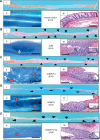
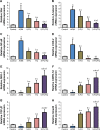
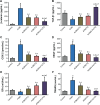
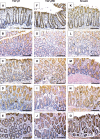
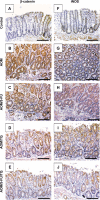
Similar articles
-
Thymoquinone potentiates chemoprotective effect of Vitamin D3 against colon cancer: a pre-clinical finding.Am J Transl Res. 2017 Feb 15;9(2):774-790. eCollection 2017. Am J Transl Res. 2017. PMID: 28337306 Free PMC article.
-
Thymoquinone: A Promising Therapeutic Agent for the Treatment of Colorectal Cancer.Curr Issues Mol Biol. 2023 Dec 23;46(1):121-139. doi: 10.3390/cimb46010010. Curr Issues Mol Biol. 2023. PMID: 38248312 Free PMC article. Review.
-
Paricalcitol Enhances the Chemopreventive Efficacy of 5-Fluorouracil on an Intermediate-Term Model of Azoxymethane-Induced Colorectal Tumors in Rats.Cancer Prev Res (Phila). 2016 Jun;9(6):491-501. doi: 10.1158/1940-6207.CAPR-15-0439. Epub 2016 Mar 28. Cancer Prev Res (Phila). 2016. PMID: 27020656
-
Vitamin D3 enhances the tumouricidal effects of 5-Fluorouracil through multipathway mechanisms in azoxymethane rat model of colon cancer.J Exp Clin Cancer Res. 2015 Jul 25;34(1):71. doi: 10.1186/s13046-015-0187-9. J Exp Clin Cancer Res. 2015. PMID: 26205949 Free PMC article.
-
Review on molecular and therapeutic potential of thymoquinone in cancer.Nutr Cancer. 2010;62(7):938-46. doi: 10.1080/01635581.2010.509832. Nutr Cancer. 2010. PMID: 20924969 Free PMC article. Review.
Cited by
-
Therapeutic potential of thymoquinone in combination therapy against cancer and cancer stem cells.World J Clin Oncol. 2021 Jul 24;12(7):522-543. doi: 10.5306/wjco.v12.i7.522. World J Clin Oncol. 2021. PMID: 34367926 Free PMC article. Review.
-
Thymoquinone potentiates chemoprotective effect of Vitamin D3 against colon cancer: a pre-clinical finding.Am J Transl Res. 2017 Feb 15;9(2):774-790. eCollection 2017. Am J Transl Res. 2017. PMID: 28337306 Free PMC article.
-
Thymoquinone: A Promising Therapeutic Agent for the Treatment of Colorectal Cancer.Curr Issues Mol Biol. 2023 Dec 23;46(1):121-139. doi: 10.3390/cimb46010010. Curr Issues Mol Biol. 2023. PMID: 38248312 Free PMC article. Review.
-
Characterization of Thymoquinone-Sulfobutylether-β-Cyclodextrin Inclusion Complex for Anticancer Applications.Molecules. 2023 May 15;28(10):4096. doi: 10.3390/molecules28104096. Molecules. 2023. PMID: 37241838 Free PMC article.
-
Natural Compounds Targeting the Autophagy Pathway in the Treatment of Colorectal Cancer.Int J Mol Sci. 2023 Apr 15;24(8):7310. doi: 10.3390/ijms24087310. Int J Mol Sci. 2023. PMID: 37108476 Free PMC article. Review.
References
-
- Ferlay J, Soerjomataram I, Dikshit R, et al. Cancer incidence and mortality worldwide: sources, methods and major patterns in GLOBOCAN 2012. Int J Cancer. 2015;136(5):E359–E386. - PubMed
-
- Stringer AM, Gibson RJ, Bowen JM, Keefe DM. Chemotherapy-induced modifications to gastrointestinal microflora: evidence and implications of change. Curr Drug Metab. 2009;10(1):79–83. - PubMed
MeSH terms
Substances
LinkOut - more resources
Full Text Sources
Other Literature Sources
Research Materials
Miscellaneous

